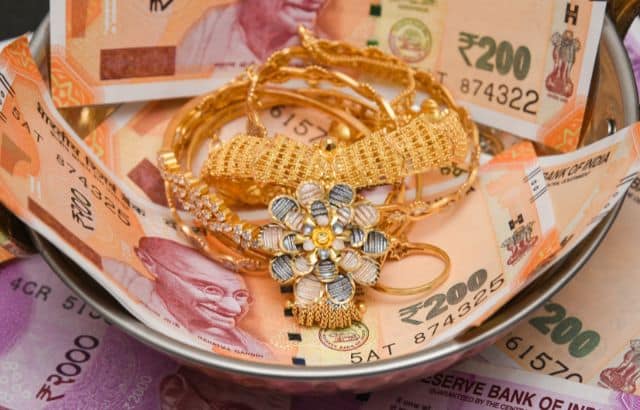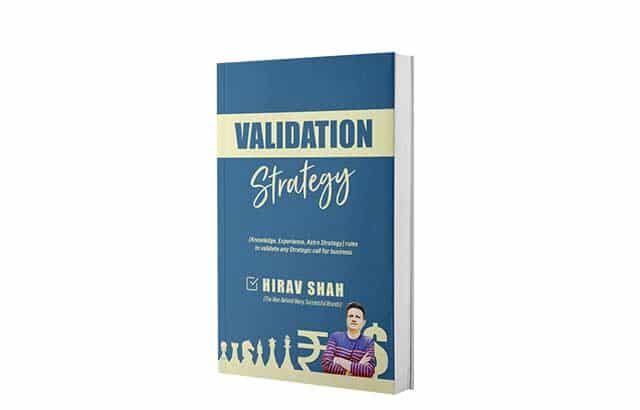India Gold Market Insights – Gold has long been cherished not only for its aesthetic allure but also for its profound emotional significance. It symbolizes wealth, status, and continuity, making it a coveted asset across cultures. Yet beneath the glittering surface lies a complex industry grappling with challenges related to worker safety, environmental sustainability, and the adoption of innovative technologies. In this landscape, expert guidance is invaluable, and business strategists like Hirav Shah play a critical role in helping stakeholders navigate the intricacies of the gold market.
Table of Contents
India Gold Market Insights-The Enduring Allure of Gold

Gold’s value stems from its rarity, which parallels that of diamonds. It’s a timeless investment that appeals to both men and women—women often seek it for personal adornment and legacy, while men view it through the lens of financial security. This emotional connection fuels an unyielding demand, making gold a vital component of investment portfolios and a tradition passed through generations.
A recent discovery of a substantial gold reserve in Turkey surprised the global market, highlighting how such finds can shift perceptions and expectations in the industry. Despite fluctuations in pricing and trends, gold remains a steadfast investment choice.
The Importance of the Gold Industry

- Economic Development: Gold mining drives sustainable development, providing jobs and infrastructure in mining regions. It supports associated industries and creates a supply chain of goods and services.
- Hedge Against Instability: Historically, rising gold prices signal economic instability. Investors often flock to gold during financial crises, viewing it as a safeguard against inflation.
- Cultural Significance: Gold’s symbolic roles in weddings, awards (like Olympic medals), and religious artifacts underscore its deep-rooted value across societies.
- Investment Versatility: From jewelry to bullion, gold caters to diverse preferences. Bullion is considered a stable investment option, appealing to those looking for security.
- Environmental Awareness: Responsible gold-mining companies are increasingly focusing on sustainable practices, such as water management and renewable energy use.
- Health and Community Support: Some mining operations provide health insurance and develop local infrastructures, contributing positively to surrounding communities.
Challenges Facing the Gold Mining Industry

The gold mining sector faces numerous hurdles, including:
- Energy Access: Companies are exploring off-grid mining locations, which often leads to increased operational costs. Scalable micro-grids are being implemented to enhance efficiency.
- Safety Risks: As mines delve deeper, the dangers of collapses and harmful gases increase. Improved ventilation systems are critical for worker safety.
- Capital Accessibility: Junior miners struggle to secure funding, hindering their ability to invest in modern mining technologies.
- Commodity Price Volatility: Fluctuating gold prices complicate financial planning, prompting companies to enhance operational efficiency and cut costs.
- Environmental Footprint: Transitioning to renewable energy sources is vital to mitigate the industry’s environmental impact and improve sustainability.
India Gold Market Insights -Global and Indian Gold Markets
The global gold market showed resilience, with prices increasing significantly in 2020. In India, where gold is not only an investment but also a cultural staple, prices are expected to rise, driven by seasonal demand and economic factors. Current forecasts suggest that gold prices could reach ₹63,000 per 10 grams.
India Gold Market Insights – Estimated Income Forecasting for the Gold Industry

The gold industry plays a vital role in the global economy, influenced by cultural factors, market dynamics, and economic conditions. Accurate income forecasting is essential for stakeholders—miners, traders, and investors—to make informed decisions. Key factors affecting income forecasting include market demand, which sees seasonal fluctuations during festivals like Diwali; global prices influenced by geopolitical stability and economic uncertainty; production costs encompassing labor and environmental compliance; technological advances that reduce costs and enhance output; and government policies that shape the operational landscape. To create a reliable income forecast, stakeholders should gather historical data, analyze past trends, develop multiple scenarios based on varying demand and price assumptions, and estimate potential income for different segments of the industry. For instance, a hypothetical gold mining company with an average selling price of ₹5,500 per gram and an annual production of 1,000 kg would generate a revenue of ₹5.5 billion and a profit of ₹2 billion after accounting for production costs. If market demand grows by 5% annually, the projected revenue for the next year could reach approximately ₹5.775 billion. Overall, income forecasting for the gold industry is a complex yet crucial process, allowing stakeholders to navigate this evolving landscape strategically.
The Role of Business Strategist Hirav Shah
Business strategist Hirav Shah is instrumental in guiding businesses within the gold mining sector. By integrating industry best practices with strategic insights, he helps clients make informed decisions. His expertise allows stakeholders to navigate financial uncertainties and capitalize on market trends.
Value Accelerator: A Case Study
For instance, a gold mining company facing financial difficulties consulted Hirav Shah. Through a detailed analysis of their operational strategy, he identified optimal investment opportunities and risk management strategies. His holistic approach resulted in a 20% reduction in operational costs within a year, demonstrating the tangible benefits of combining strategic planning with business acumen.
India Gold Market Insights – Frequently Asked Questions (FAQs)

1. Why is gold considered a safe investment?
Gold is a tangible asset that typically retains value even during economic downturns. It acts as a hedge against inflation and currency fluctuations.
2. How does strategic planning play a role in business decisions?
Strategic insights can provide guidance on timing, compatibility, and potential challenges, allowing business leaders to make more informed decisions.
3. What are the environmental initiatives in gold mining?
Many companies are adopting hybrid energy solutions, improving water management, and implementing waste reduction practices to minimize their ecological impact.
India: The World’s Largest Gold Market
India stands out as the largest gold market globally, shaped by cultural, economic, and demographic factors. The affinity for gold is deeply ingrained in Indian society, making it a critical component of both personal wealth and the national economy.
India Gold Market Insights – Reasons Why India is the Biggest Gold Market

- Cultural Significance: Gold is more than just a commodity in India; it symbolizes wealth, prosperity, and status. For instance, during weddings, families often purchase gold jewelry worth several lakhs, highlighting its importance.
- Investment Preference: Many Indians view gold as a safe haven. For example, during the economic turmoil of 2020, gold prices surged by nearly 25%, as people flocked to gold to protect their wealth from market volatility.
- Growing Middle Class: With an expanding middle class, more households are able to invest in gold. Reports suggest that the number of households owning gold has increased by 30% over the last decade.
- Gold as a Gift: Gold is a traditional gift during festivals and significant life events. During Diwali, it’s common for families to purchase gold coins, resulting in a spike in demand that can account for nearly 30% of annual gold sales.
- Urbanization and Modernization: Urban centers are seeing a shift in preferences, with younger generations interested in trendy gold jewelry and investment products. This demographic change has driven demand in cities like Mumbai and Bengaluru.
- Lack of Alternative Investment Options: Many rural households prefer gold over volatile financial assets. For example, in regions with limited banking access, gold remains a primary means of savings.
- Government Policies: Initiatives like the Gold Monetization Scheme aim to mobilize idle gold and encourage investments. Under this scheme, individuals can deposit their gold for interest, effectively turning dormant assets into active investments.
- Import of Gold: India’s gold imports were valued at approximately $40 billion in 2020, demonstrating the extensive demand for gold in various forms, including jewelry and bullion.
Role of Business Strategist
Business strategists, like Hirav Shah, play a crucial role in helping stakeholders in the gold market navigate challenges and capitalize on opportunities. They provide insights into market trends, investment strategies, and operational efficiencies.
Example of Strategic Guidance
A gold jewelry retailer facing declining sales consulted a business strategist. By analyzing market trends and consumer preferences, the strategist recommended:
- Diversifying Product Lines: Introducing contemporary designs appealing to younger buyers.
- Enhancing Online Presence: Developing an e-commerce platform to reach tech-savvy customers.
As a result, the retailer saw a 40% increase in sales over six months.
India Gold Market Insights – Frequently Asked Questions (FAQs)

1. Why is gold so culturally important in India?
Gold is tied to traditions, symbolizing wealth and auspiciousness. It is essential for weddings and festivals, where families often spend significant amounts on gold jewelry.
2. How does gold serve as an investment in India?
Gold is viewed as a hedge against inflation and economic instability. For instance, during economic downturns, gold prices have historically risen, protecting investors’ wealth.
3. What role does the middle class play in gold consumption?
The growing middle class contributes to increased gold consumption. A report by the World Gold Council indicated that 50% of Indian households now own gold, reflecting rising affluence.
4. Are there any government initiatives to promote gold investment?
Yes, initiatives like the Gold Monetization Scheme allow individuals to deposit gold and earn interest, encouraging formal investment in gold.
5. How does the demand for gold change during festivals?
Festivals like Diwali significantly boost gold demand, often accounting for 25-30% of annual sales. During this time, retailers often offer discounts and special collections.
6. What trends are emerging among younger consumers?
Younger consumers are gravitating toward modern designs and investment products like Gold ETFs, reflecting a shift in how gold is perceived as both an asset and an accessory.
7. How do economic factors influence gold prices in India?
Gold prices are affected by global trends, currency fluctuations, and domestic demand. For example, when the Indian Rupee weakens against the Dollar, gold prices typically rise.
8. Is gold a good investment compared to other assets?
Gold is generally considered a stable investment, particularly during inflationary periods. For example, while the stock market might fluctuate, gold’s value tends to hold steady or appreciate.
Sample Calculations
1. Calculating Gold Investment Returns
If an investor bought 10 grams of gold at ₹4,500 per gram (total investment of ₹45,000) and sold it when the price rose to ₹5,500 per gram, the calculation would be:
Selling Price:
10 grams × ₹5,500/gram = ₹55,000
Profit:
₹55,000 - ₹45,000 = ₹10,000
2. Annual Gold Consumption
If India’s gold consumption is approximately 800 tonnes annually and the price per tonne is around ₹4 crores, the total market value can be estimated as:
Total Market Value:
800 tonnes × ₹4 crores/tonne = ₹32,000 crores
India Gold Market Insights Final Words

India’s status as the largest gold market reflects its deep-rooted cultural values, economic conditions, and evolving consumer preferences. Festivals like Lakshmi Puja, which celebrates the goddess of wealth, further amplify the significance of gold in Indian society. During this auspicious occasion, it is traditional for families to purchase gold as a symbol of prosperity and blessings for the year ahead.
With strategic guidance from experts, stakeholders can effectively navigate this dynamic landscape. As demand for gold continues to grow, understanding market trends and investing wisely will be crucial for success in this enduring industry.
Gold’s emotional resonance and economic significance create a vibrant sector filled with opportunities and challenges. Events like Lakshmi Puja not only drive increased gold purchases but also reinforce its status as a cherished asset in Indian households. By leveraging expert insights from strategists like Hirav Shah, stakeholders can navigate this landscape more effectively.
The gold industry, with its rich history and potential for sustainable development, remains a crucial player in the global economy. As trends evolve and new technologies emerge, the wisdom of seasoned advisors can be the key to thriving in this enduring market, especially during culturally significant times like Lakshmi Puja.










